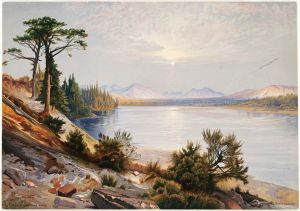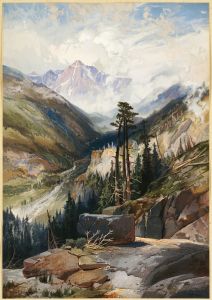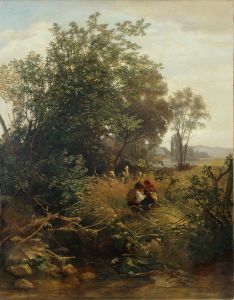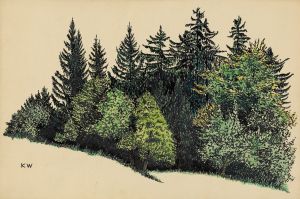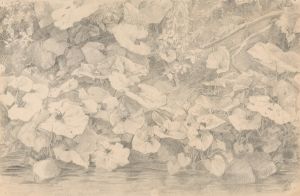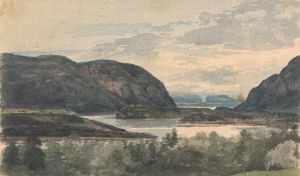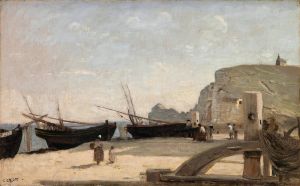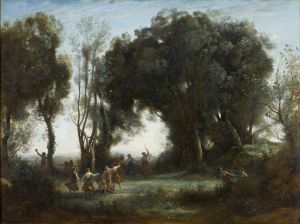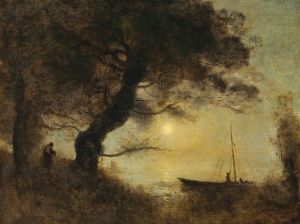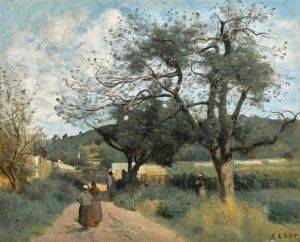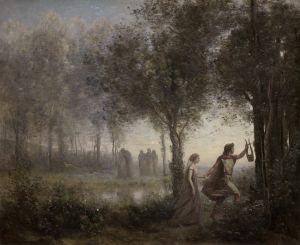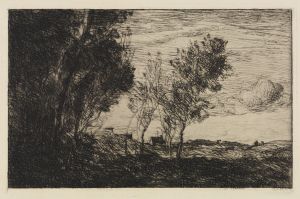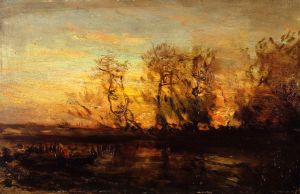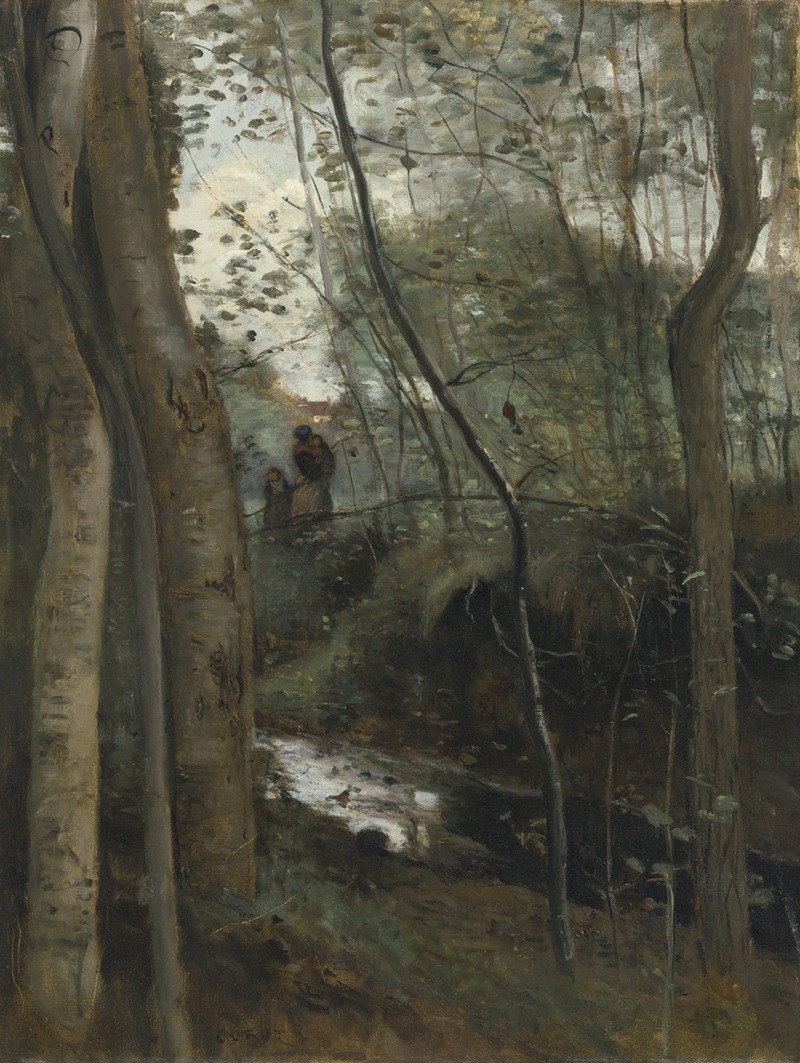
Un ruisseau sous bois
A hand-painted replica of Jean-Baptiste-Camille Corot’s masterpiece Un ruisseau sous bois, meticulously crafted by professional artists to capture the true essence of the original. Each piece is created with museum-quality canvas and rare mineral pigments, carefully painted by experienced artists with delicate brushstrokes and rich, layered colors to perfectly recreate the texture of the original artwork. Unlike machine-printed reproductions, this hand-painted version brings the painting to life, infused with the artist’s emotions and skill in every stroke. Whether for personal collection or home decoration, it instantly elevates the artistic atmosphere of any space.
Jean-Baptiste-Camille Corot was a pivotal figure in landscape painting during the 19th century, and his work "Un ruisseau sous bois" exemplifies his mastery in capturing the serene beauty of nature. Corot was part of the Barbizon School, a group of painters who sought to break away from the formalism of academic art and instead focus on natural landscapes, often painting en plein air, or outdoors. This approach allowed them to capture the changing effects of light and atmosphere with greater immediacy and authenticity.
"Un ruisseau sous bois," which translates to "A Stream in the Woods," is a quintessential example of Corot's ability to convey the tranquil and intimate aspects of nature. The painting features a gentle stream meandering through a densely wooded area, with light filtering through the canopy of trees. Corot's use of soft, muted colors and delicate brushwork creates a sense of calm and introspection, inviting the viewer to step into the quietude of the scene.
Corot's technique in this painting reflects his transition from the neoclassical style of his early career to a more naturalistic approach. He often employed a limited palette, focusing on tonal harmony to evoke mood rather than relying on vivid colors. This method is evident in "Un ruisseau sous bois," where the interplay of light and shadow is achieved through subtle gradations of green, brown, and gray. The composition is balanced and harmonious, with the stream leading the eye through the painting, creating a sense of depth and movement.
Corot's influence on the development of landscape painting was profound. His work bridged the gap between the classical landscape tradition and the emerging Impressionist movement. While he maintained a commitment to realistic representation, his emphasis on capturing the transient effects of light and atmosphere foreshadowed the techniques employed by later Impressionists. Artists such as Claude Monet and Camille Pissarro acknowledged Corot's impact on their own work, particularly in their approach to plein air painting and their focus on natural light.
"Un ruisseau sous bois" is not only a testament to Corot's skill as a painter but also reflects his deep appreciation for the natural world. His landscapes often convey a sense of timelessness and universality, capturing the essence of nature's beauty without the intrusion of human presence. This focus on the purity of the natural environment was a hallmark of the Barbizon School and a precursor to the environmental awareness seen in later art movements.
Corot's legacy extends beyond his paintings; he was also a mentor to many younger artists, offering guidance and support to those who would go on to shape the future of art. His studio became a gathering place for aspiring painters, and his willingness to share his knowledge and techniques helped to foster a new generation of artists who would carry forward his vision of landscape painting.
In summary, "Un ruisseau sous bois" is a significant work within Jean-Baptiste-Camille Corot's oeuvre, showcasing his ability to capture the serene beauty of nature with subtlety and grace. Through his innovative approach to landscape painting, Corot not only contributed to the evolution of art in the 19th century but also laid the groundwork for future artistic movements that would continue to explore the relationship between light, atmosphere, and the natural world.





